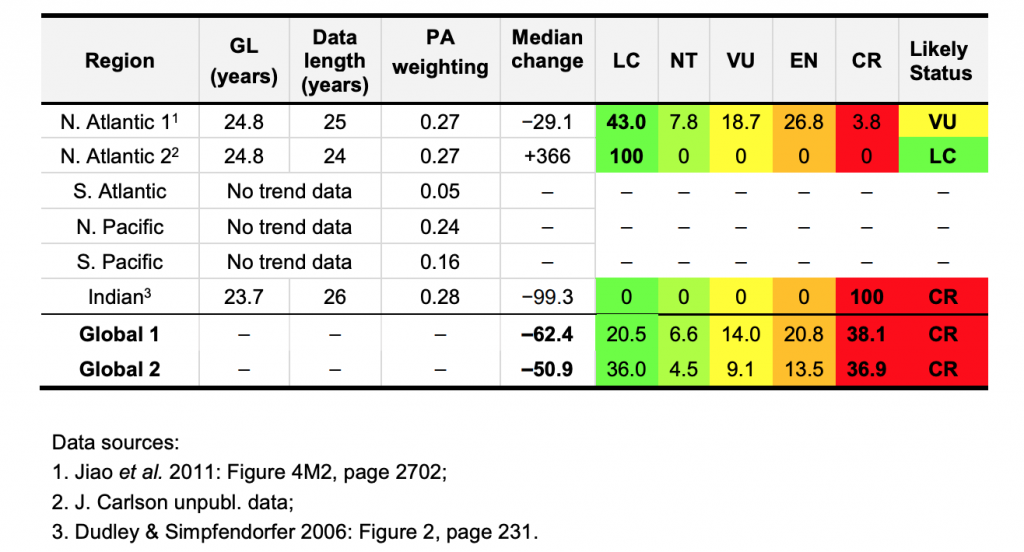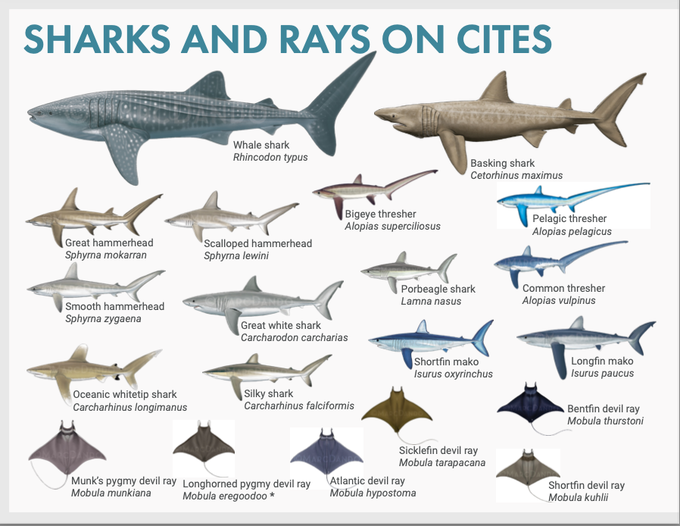There are few sharks more recognizable or enigmatic than the hammerhead shark with their winglike head, also known as a cephalofoil. Hammerhead sharks are highly adapted and increasingly rare sharks that are threatened with extinction.
With large, robust and well structured fins, hammerhead fins are highly coveted for shark fin soup. Fins from millions of hammerheads end up in the Hong Kong shark fin market each year.
Great hammerheads suffer high mortality (over 90%) during capture, so not only shark finning bans and protected species status are completely sufficient to rebuild and conserve their populations.

Table 1. Sphyrna mokarran – Population change (%) and posterior probabilities for changes falling within the IUCN Red List categories Least Concern (LC), Near Threatened (NT), Vulnerable (VU), Endangered (EN), and Critically Endangered (CR); the “likely status” based on criteria A2–4 is assigned based on the category containing the highest posterior probability, with the exception that VU is also selected where LC obtained the highest probability, but it is < 50%. All probabilistic statements are based on the rate of change over three generation lengths (GL) from projections within JARA. The Global change is based on weighting the regional posterior probabilities by the proportional area (PA) weighting (see text for detail).
Around the world these sharks are killed as bycatch in gillnet and longline fisheries, and are targeted for food, skin and their teeth in artisinal fisheries. Shark Stewards is working with the Shark Research Institute and US Fish and Wildlife to uplist Scalloped Hammerhead and Great Hammerhead sharks to Appendix II under CITES and list the entire family of Sphyrnidae under CITES due to their vulnerability and look alike status in the shark fin trade.

One of the most threatened large sharks, the population of Great Hammerheads (Sphryna mokkaran) has declined more than 50% in the past 70 years In the Atlantic Ocean. In the Pacific the population has declined dramatically, and populations have vanished from much of their range.
Download Brochure CITES Appendix II Listings